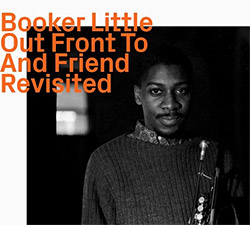
The lesser known hard bop trumpeter Booker Little died at just 23, but left a legacy in these two sextet albums that balance lyricism with freedom — Out Front and Booker Little and Friend — the former recorded with Eric Dophy and Max Roach, and the latter with George Coleman & Julian Priester, both albums with legendary players including Ron Carter, Reggie Workman, Art Davis, Don Friedman &c..
In Stock
Quantity in Basket: None
Log In to use our Wish List
Shipping Weight: 3.00 units
EU & UK Customers:
Discogs.com can handle your VAT payments
So please order through Discogs
Sample The Album:
Booker Little-trumpet
Eric Dolphy-alto saxophone, bass clarinet, flute
Julian Priester-trombone
Don Friedman-piano
Art Davis-double bass
Ron Carter-double bass
Max Roach-drums, timpani, vibraphone
George Coleman-tenor saxophone
Reggie Workman-double bass
Pete La Roca-drums
Click an artist name above to see in-stock items for that artist.
UPC: 752156117421
Label: ezz-thetics by Hat Hut Records Ltd
Catalog ID: ezz-thetics 1174
Squidco Product Code: 34889
Format: CD
Condition: New
Released: 2024
Country: Switzerland
Packaging: Cardboard Gatefold
Tracks 1 to 7 recorded at Nolas Penthouse Sound Studios, in New York, New York, on March 17th, and April 4th, 1961. Tracks 8 to 13 recorded in NYC, in August or September, 1961.
Out Front originally released in 1961 on the Candid label as a vinyl LP with catalog code CJM 8027.
Booker Little and Friend originally released in 1961 on the Bethlehem label as a vinyl LP with catalog code BCP 6061.
"An academic at the University of California, Los Angeles claims to have found a connection between jazz and the poetry of T.S. Eliot. As evidence they point to the rhythms and imagery Eliot used in The Waste Land. Opposing this idea is the fact that the socially conservative Eliot never expressed any interest in jazz. So the jury is still out. But Eliot examined literary aesthetics, with implications for jazz, in his pioneering essay Tradition And The Individual Talent. He suggested that works from the past form a tradition which is constantly being reconfigured by new works creating space for themselves within that tradition. Abandoning the binary thinking which shaped literary criticism in the 1920s, Eliot argued that a poem (and by extension any form of artistic endeavour) could be both avant garde and part of a tradition and that the two qualities were not, as binary thinking asserted, discrete and opposed, but mutually transformative. "The past should be altered by the present as much as the present is directed by the past," concluded Eliot.
It was an idea ahead of its time. So far as jazz was concerned, it was still ahead of its time in 1961, when Booker Little passed shortly after completing the recordings collected on this album. That year, a DownBeat critic described Little's friend and fellow traveller Eric Dolphy as "anti-jazz." Little's lower profile meant he escaped such vilification, but his composing and arranging, and his playing, similarly embodied the idea that a jazz musician could rattle the cage of tradition while simultaneously keeping the faith.
In 1961, in a rare interview, Little said that he was "interested in freedom" and "the possibilities of dissonance" but, crucially, that he also had "respect for form." Little's involvement in formalised Black American music began while he was growing up in Memphis in the 1940s; his mother and father played in church and he and his sister Vera sang in the choir (she later became the first Black singer to perform for a pope, when she sang in the Vatican in 1959.) As we know, practically all of Little's radical peers began their musical journeys singing gospel. But in 1961, the jazz establishment's predominantly non-Black gatekeepers subscribed to the crudities of binary thinking. For them the burning question, less than two years after the release of The Shape Of Jazz To Come, was whether a musician was part of the tradition or avant garde. They could not be both. The positions were antithetical.
Little paid a price for his nonconformism. If Dolphy was defamed, Little was sidelined. Compare his career trajectory to that of the more stylistically conservative Lee Morgan, three months his junior. By 1961, Morgan had released thirteen albums under his own name; he was a folk hero among New York's hipster demi-monde and a frequent presence on jazz radio and in the music press. When Little passed, he had only four albums to his name, one of them co-billed with Max Roach. There was no obituary in The New York Times and nor did he figure in that year's DownBeat Critics Poll or Readers Poll. By the end of the decade, Eliot's idea of chronologically transformative symbiosis had gained ground in jazz criticism. But it was too late for Little.
Among progressive musicians, however, Little was held in high regard during his lifetime. In his final year alone he contributed to some half-a-dozen important recordings by high-profile musicians, among them John Coltrane (Africa/Brass), Dolphy (Far Cry and At The Five Spot Vol 1 and Vol 2), Abbey Lincoln (Straight Ahead), and Roach (Percussion Bitter Sweet, which followed in short order from 1960's We Insist!, on which Little was also featured). He also recorded his own albums Out Front, with Dolphy, and Booker Little And Friend, with George Coleman (the Friend refers to Little's trumpet, not his friend Coleman).
The material on From Out Front To Booker Little And Friend Revisited is Little's collective chef d'oeuvre. It is exploratory but also strewn with retentions from tradition. The dense yet sonorous dissonance, the graceful tempo and metre shifts, the extended forms that give equal weight to composed and improvised sections, together these "alter the present" and "direct the past." Little's playing time-travels, too; his micro valve-depressions expand the trumpet's vocabulary in the same way that in the 2020s Oded Tzur's raga-inspired technique is growing the tenor saxophone's language and Ruth Goller's microtonal ventures with her Skylla band are doing the same for the bass.
If one half of Revisited has an edge over the other it is the tracks featuring Dolphy. Those with Coleman are marginally closer to contemporary convention. But there is nothing fundamentally separating the Out Front material from that of Booker Little And Friend, to distinguish, for instance, Dolphy's anguish on "Moods In Free Time" from the bittersweet "Matilde." And coincidentally, or presciently, the tracks with Coleman complete a circle begun in the mid 1950s when Little and Coleman struck out from Memphis together to make their mark on the wider jazz world. One passed aged 23 years, the other is still with us, and both made the best of marks."-Chris May, London, March 2024

The Squid's Ear!
Artist Biographies
• Show Bio for Booker Little "Booker Little Jr. (April 2, 1938 – October 5, 1961) was an American jazz trumpeter and composer. He appeared on many recordings in his short career, both as a sideman and as a leader. Little performed with Max Roach, John Coltrane, and Eric Dolphy and was strongly influenced by Sonny Rollins and Clifford Brown. He died aged 23. Booker Little Jr. was born in Memphis, Tennessee to Booker, a Pullman porter who was a trombonist, and his wife Ophelia Little, who was a church organist. He also was the brother of Helena, Vivian, and Vera Little (Vera later sung with the London Opera Company). From such a musically inclined family, Little naturally gravitated towards music at a young age. His first instrument was trombone (like his father), but he switched to clarinet at the age of 12. At 14, his band director urged him to switch to trumpet, and he settled on the instrument quickly. In 1952, Little started attending Manassas High School where he continued his development on trumpet and later graduated. Being in Memphis, Little was able to further develop his talent with contemporaries such as Phineas Newborn Jr., George Coleman, Frank Strozier, and his cousin Louis Smith. He was performing with Newborn on a casual basis by his mid-teens. After graduating, he moved to Chicago, Illinois to continue his studies at the Chicago Conservatory in 1954. At the conservatory, he continued to study trumpet but also incorporated studies in composition, theory, and orchestration with a minor in piano. He would later on graduate with a bachelor's degree in his main instrument. As a sophomore, Little met Sonny Rollins. For about nine months, they both stayed at the YMCA where Rollins would influence Little greatly by encouraging him to find his own sound versus mimicking other musicians. While attending a recording session with Rollins, Little met drummer Max Roach in 1955. Following the death of Clifford Brown the next year, Little became Roach's trumpet player in his band Max Roach Four. Being in school interfered with the quality of his performance, and he was replaced by Kenny Dorham. Following graduation, Little rejoined Roach's band, reclaiming his spot from Dorham in 1958. In that band, he reunited with one of his friends from Memphis, George Coleman. As trumpeter, Little made his recording debut on Max Roach + 4 on the Chicago Scene in June. He was featured on pieces like "My Old Flame". Little recorded two more albums with the group, which Roach altered by replacing the piano with tuba player Ray Draper. On Max Roach + 4 at Newport, Little introduced his first composition, "Minor Mode", and on "A Night in Tunisia" he was the main soloist. On their album, Deeds, Not Words, in the opening piece, "You Stepped Out of a Dream", Little displayed his arranging skills, where the tenor sax, trumpet and tuba share similar voicings that created tension and sophisticated musicality within the unusual piano-less group. Little had a hand in the majority of the arranging on the Deeds, Not Words album. In October, the group appeared on ABC's Stars of Jazz television program. Also during October, Little recorded his first album as a leader, Booker Little 4 and Max Roach (also known as The Defiant Ones) with Roach on drums, Coleman on tenor, and Davis on bass (with Tommy Flanagan on piano). On The Defiant Ones, Little played three of his original pieces, "Rounders Mode", "Dungeons Waltz", and "Jewels Tempo". Following his first album as leader, Little and Max Roach + 4 recorded one more album before the end of 1958 titled Award-Winning Drummer under Roach's name and another titled Many Sides of Max Roach in 1959 (the second album was not released until 1964). Many Sides of Max Roach was the last album Booker Little recorded with Roach's group until 1960. During his leave, Little freelanced around New York developing new acquaintances with musicians such as John Coltrane, Slide Hampton, and Teddy Charles. He was present on two of the four tracks of a reunion album with his old friends Coleman, Strozier, Smith, Phineas Newborn Jr., Calvin Newborn, George Joyner, and Charles Crosby titled Down Home Reunion, credited as by Young Men From Memphis, where the group displayed their interests in blues music. Through the course of the end of 1959 and early 1960, Little featured and worked on albums such as Slide!, Bill Henderson Sings, and the last album he recorded before returning to Roach's group, Fantastic Frank Strozier. In addition, he also recorded his second album as a lead simply titled Booker Little for Bob Shad's Time label where he introduced his original compositions such as '"Opening Statement", "Minor Sweet", "Bee Tee's minor Plea", "Life's a Little Blue" and "The Grand Valse". In 1960, Little rejoined Roach's band and recorded 14 albums from April 1960 to September 1961. Following his return, Little took on a bigger role being music director and composing more music for the group. The first album Roach recorded with Little as trumpeter was We Insist! - Freedom Now Suite. Little continued to work with Roach but soon met Eric Dolphy. The combination of Little and Dolphy presented the possibility of the dawning of a new sound of music. At the beginning of their newfound association, Dolphy recorded Far Cry with Little on trumpet. In addition, Little also recorded his third album as lead Out Front. This album Out Front was a result of his work on We Insist! Following the recording of We Insist, Little was hired by Nat Hentoff to write for Candid Records. With Dolphy, he co-led a residency at the Five Spot club in New York in June 1961, from which three albums were eventually issued by the Prestige label titled Eric Dolphy at the Five Spot Volumes 1&2 and the Memorial Album. It was during this period that he began to show promise of expanding the expressive range of the "vernacular" bebop idiom which originated with Clifford Brown, his most immediate influence as a performer. Booker Little recorded his final album with Roach in August 1961 titled Percussion Bitter Sweet with Dolphy on sax and recorded his last and final album as leader entitled Booker Little and Friend (also known as Victory and Sorrow). After years of physical pain, Little died of complications resulting from uremia on October 5, 1961, in New York City at the age 23. He was survived by his wife, two sons Booker T. III and Larry Cornelius, and two daughters Cornelia and Ana Dorsey." ^ Hide Bio for Booker Little • Show Bio for Eric Dolphy "Eric Allan Dolphy Jr. (June 20, 1928 - June 29, 1964) was an American jazz alto saxophonist, bass clarinetist and flautist. On a few occasions, he also played the clarinet and piccolo. Dolphy was one of several multi-instrumentalists to gain prominence in the same era. His use of the bass clarinet helped to establish the instrument within jazz. Dolphy extended the vocabulary and boundaries of the alto saxophone, and was among the earliest significant jazz flute soloists. His improvisational style was characterized by the use of wide intervals, in addition to employing an array of extended techniques to emulate the sounds of human voices and animals. He used melodic lines that were "angular, zigzagging from interval to interval, taking hairpin turns at unexpected junctures, making dramatic leaps from the lower to the upper register." Although Dolphy's work is sometimes classified as free jazz, his compositions and solos were often rooted in conventional (if highly abstracted) tonal bebop harmony." ^ Hide Bio for Eric Dolphy • Show Bio for Julian Priester "Julian Priester (born June 29, 1935) is an American jazz trombonist. He is sometimes credited "Julian Priester Pepo Mtoto". He has played with Sun Ra, Max Roach, Duke Ellington, John Coltrane, and Herbie Hancock. Priester attended Chicago's DuSable High School, where he studied under Walter Dyett. In his teens he played with blues and R&B artists such as Muddy Waters, and Bo Diddley, and had the opportunity to jam with jazz players like saxophonist Sonny Stitt. In the early 1950s, Priester was a member of Sun Ra's big band, recording several albums with the group before leaving Chicago in 1956 to tour with Lionel Hampton and he joined Dinah Washington in 1958. The following year he settled in New York and joined the group led by drummer Max Roach who heard him playing on the Philly Joe Jones album, "Blues for Dracula" (1958). While playing in Roach's group, Priester also recorded two albums as a leader, Keep Swingin' and Spiritsville, both of which were recorded and released by Riverside (the latter by their Jazzland subsidiary) in 1960. Priester recorded two albums with trumpeter Booker Little in 1961, Out Front and Booker Little and Friend (also known as Victory and Sorrow), the first also features Roach, and Priester took part in the sessions for John Coltrane's Africa/Brass album, which was recorded in the same year. He left Roach's band during 1961, and between then and 1969 appeared as a sideman on albums led by Freddie Hubbard, Stanley Turrentine, Blue Mitchell, Art Blakey, Joe Henderson, McCoy Tyner, Johnny Griffin, and Sam Rivers. In 1969, he accepted an offer to play with Duke Ellington's big band, and he stayed with that ensemble for six months before leaving in 1970 to join pianist Herbie Hancock's fusion sextet. After leaving the Hancock in 1973, Priester moved to San Francisco, where he recorded two more albums as a leader: Love, Love in 1974 and 1977's Polarization. In 1979 he joined the faculty of Cornish College of the Arts in Seattle, where he taught jazz composition, performance, and history until retiring in 2011. In the 1980s, he became a member of the Dave Holland's quintet and also returned to Sun Ra's band for a few recordings. The 1990s saw the addition of Charlie Haden's Liberation Music Orchestra to his schedule. Priester was co-leader with drummer Jimmy Bennington on 'Portraits and Silhouettes' which received an Honorable Mention in All About Jazz New York's 'Best Recordings of 2007', which culminated with the two musicians appearing at the 30th Annual Chicago Jazz Festival. Priester also performs on the album Monoliths & Dimensions by the drone metal band Sunn 0))), released in May 2009. His major contributions were to the final track of the album, "Alice," a tribute to Alice Coltrane. In addition to teaching and touring, Priester continues to record albums under his own name. He released Hints on Light and Shadow (with Sam Rivers and Tucker Martine) in 1997 and followed it in 2003 with In Deep End Dance." ^ Hide Bio for Julian Priester • Show Bio for Don Friedman "Donald Ernest Friedman (May 4, 1935 – June 30, 2016) was an American jazz pianist. He began playing in Los Angeles and moved to New York in 1958. In the 1960s, he played with both modern stylists and more traditional musicians. Friedman was born on May 4, 1935, in San Francisco. Both of his parents immigrated to the United States: his father, Edward Friedman, was from Lithuania, and his mother, Alma Loew, was from Germany. He began playing the piano at the age of four, switching from classical music to jazz after his family moved to Los Angeles when he was fifteen. His early jazz piano influence was Bud Powell. Friedman briefly studied composition at Los Angeles City College. On the West Coast, Friedman performed with Dexter Gordon, Chet Baker, Buddy DeFranco, and Ornette Coleman. He was also a member of Clark Terry's big band. Friedman moved to New York permanently in 1958. In the 1960s, Friedman played with both modern jazz and more traditionally orientated musicians. The former included Coleman, Eric Dolphy, Jimmy Giuffre, Booker Little, and Attila Zoller; the latter included Bobby Hackett and Herbie Mann. Friedman's first album as a leader was A Day in the City, in 1961. Some of his early albums received top ratings from DownBeat, which also gave him its critics' poll New Star award. He was also an educator in New York. He had many fans in Japan. Friedman married three times; the first two ended in divorce. He died of pancreatic cancer, at home in the Bronx on June 30, 2016. Survivors were one daughter, actress/writer, Lynn Adrianna Freedman, and a granddaughter." ^ Hide Bio for Don Friedman • Show Bio for Art Davis "Arthur David Davis (December 5, 1934 – July 29, 2007) was a double-bassist, known for his work with Thelonious Monk, John Coltrane, Dizzy Gillespie, McCoy Tyner and Max Roach. Davis was born in Harrisburg, Pennsylvania, United States, where he began studying the piano at the age of five, switched to tuba, and finally to bass while attending high school. He studied at Juilliard and Manhattan School of Music but graduated from Hunter College. As a New York session musician, he recorded with many jazz and pop musicians and also in symphony orchestras such as the New York Philharmonic and Los Angeles Philharmonic. He recorded with Dizzy Gillespie, Max Roach, and John Coltrane among other jazz musicians. Art Davis was a professor at Orange Coast College. Davis is also known for starting a legal case that led to blind auditions for orchestras. Davis earned a Ph.D. in clinical psychology from New York University in 1982. He moved in 1986 to southern California, where he balanced his teaching and practicing of psychology with jazz performances. Davis died on July 29, 2007, following a heart attack. He was survived by two sons and a daughter." ^ Hide Bio for Art Davis • Show Bio for Ron Carter "Ron Carter is among the most original, prolific, and influential bassists in jazz. He has recorded over 2200 albums, and has a Guinness world record to prove it! In Jazz: Over his 60 year career, he has recorded with so many of the jazz greats greats: Lena Horne, Bill Evans, B.B. King, Dexter Gordon, Wes Montgomery, Bobby Timmons, Eric Dolphy, Cannonball Adderley and Jaki Byard to name a few. From 1963 to 1968, he was a member of the acclaimed Miles Davis Quintet. In other genres: After leaving the quintet he embarked on a prolific 50-year free lance career that spanned vastly different music genres and continues to this day. He recorded with Aretha Franklin, appeared on the seminal hip-hop album Low End Theory with a Tribe Called Quest, wrote and recorded pieces for string quartets and Bach chorales for 2-8 basses and accompanied Danny Simmons on a spoken word album. As a leader: Carter spends at least half the year on worldwide tours with his various groups. The Ron Carter Trio, The Ron Carter quartet, the Ron Carter Nonet and Ron Carter’s Great Big Band. He has recorded multiple albums with his groups. As an author: Carter shares his expertise in the series of books he authored, where he explains his creative process and teaches bassists of all levels to improve their skills and develop their own unique sound. He also penned his autobiography “Finding the Right Notes” which is available in print and also as an audiobook read by the Maestro himself. As a teacher: Carter has lectured, conducted, and performed at clinics and master classes, instructing jazz ensembles and teaching the business of music at numerous universities. He was Artistic Director of the Thelonious Monk Institute of Jazz Studies while it was located in Boston and, after 18 years on the faculty of the Music Department of The City College of New York, he is now Distinguished Professor Emeritus, he currently teaches at Manhattan School of Music. In film scoring: In addition to scoring and arranging music for many films, including some projects for Public Broadcasting System, Carter composed music for A Gathering of Old Men, starring Lou Gosset Jr., The Passion of Beatrice directed by Bertrand Tavernier, and Blind Faith starring Courtney B. Vance. Film appearances: Most jazz documentaries feature the Maestro because of his indelible contribution to the genre. Ken Burns “Jazz”, “Birth of the Cool” about Miles Davis, "It Must be Schwing", the story of the Blue Note and many more. He also appeared as himself in HBO’s hit series “Treme” and was the bassist on soundtracks of Twin Peaks, Bird, and way too many others to mention. Education: Carter earned a bachelor of music degree from the Eastman School in Rochester and a master's degree in double bass from the Manhattan School of Music in New York City. He has also received five honorary doctorates, from the New England Conservatory of Music, Manhattan School of Music, University of Rochester, Juilliard and Berklee, and was the 2002 recipient of the prestigious Hutchinson Award from the Eastman School at the University of Rochester." ^ Hide Bio for Ron Carter • Show Bio for Max Roach "Maxwell Lemuel Roach (January 10, 1924 - August 16, 2007) was an American jazz drummer and composer. A pioneer of bebop, he worked in many other styles of music, and is generally considered one of the most important drummers in history. He worked with many famous jazz musicians, including Coleman Hawkins, Dizzy Gillespie, Charlie Parker, Miles Davis, Duke Ellington, Thelonious Monk, Abbey Lincoln, Dinah Washington, Charles Mingus, Billy Eckstine, Stan Getz, Sonny Rollins, Eric Dolphy, and Booker Little. He was inducted into the DownBeat Hall of Fame in 1980 and the Modern Drummer Hall of Fame in 1992. Roach also co-led a pioneering quintet along with trumpeter Clifford Brown and the percussion ensemble M'Boom. He made numerous musical statements relating to the civil rights movement. [...]" ^ Hide Bio for Max Roach • Show Bio for George Coleman "No tenor saxophonist better epitomizes the robust muscularity of that heavyweight instrument of jazz expression than George Coleman. With brilliant technique and a deeply soulful tone firmly rooted in his hometown of Memphis, George has performed with many of jazz' most legendary figures and influenced countless saxophonists during his half century in music. Growing up in Memphis' rich musical environment of the late '40s and early '50s, alongside such notables as Booker Little, Harold Mabern, Frank Strozier, Jamil Nasser, Hank Crawford, Phineas Newborn Jr., and blues immortal B.B. King, Coleman began to teach himself to play the alto saxophone in 1950, upon being profoundly affected by the music of Charlie Parker. So prodigious was his talent that George was soon performing locally and in 1952, at the age of 17, was invited to tour with B.B. King after the guitarist heard him in a local club. Coleman spent three more years on the vibrant Memphis scene, expanding his musical knowledge through his associations and influences, and writing for popular artists including the Moonglows and Ray Charles. In 1955 he rejoined B.B.'s band, but this time on tenor sax, which would become his primary horn from that point on. In 1956 George moved to Chicago, along with Booker Little. The bustling jazz scene brought him together with local heavyweights like Gene Ammons, Johnny Griffin, John Gilmore and Ira Sullivan, and he joined Walter Perkins' group, The MJT + 3. When Max Roach heard George with this unit in 1958, he invited him to join his own quartet featuring Kenny Dorham on trumpet. Coleman moved to New York later that year and has made his home there ever since. Booker soon replaced Dorham in the group and George remained with Max for two years. When eminent trombonist Slide Hampton formed his octet in 1959, George and his Max Roach bandmates Little and Julian Priester formed the brass-heavy front line with Slide and Freddie Hubbard. He remained with Hampton until 1962, touring Europe for the first time during his stay. But more importantly, he began focusing more on his own composing and arranging, laying the foundation for his own octet that would be formed in 1974 and which is still a powerful force on the scene today. After a brief stint with organist Wild Bill Davis, a call from the incomparable Miles Davis in 1963 briefly re-united Coleman with his old Manassas High schoolmates Mabern and Strozier, who soon departed in favor of the personnel that would form one of the most influential groups in jazz history. For two years George was a member of that groundbreaking quintet with Herbie Hancock, Ron Carter and Tony Williams, recording four classic albums - Seven Steps to Heaven, My Funny Valentine, Four and Miles Davis in Europe - before departing to pursue other projects, leaving that highly visible position to Wayne Shorter. The following year George and Hubbard joined with Miles' rhythm team for Herbie Hancock's landmark Maiden Voyage, one of the most popular albums in the history of jazz. Over the ten years from 1964-74, Coleman freelanced as a member of various groups led by some of the music's most prominent figures, including Lionel Hampton, Lee Morgan, Elvin Jones, Charles Mingus, Betty Carter, Chet Baker, Shirley Scott, Charles McPherson, Cedar Walton and many more. He also composed and arranged for various ensembles. Since 1973 Coleman has focused primarily on his own groups, working in quartet, quintet and octet settings, adding the soprano saxophone to his arsenal in 1990. With those various groups the powerful saxophonist has become a prominent figure at festivals, prestigious concert halls and top clubs all over the U.S. and Europe, also performing as a special guest artist with such notable pianists as Ahmad Jamal, Hilton Ruiz, Richie Beirach and the late Tete Montoliu. He has recorded more than a dozen albums as leader for labels such as Verve, Muse, Timeless, Evidence, Birdology and most recently, Two and Four, not to mention plus countless recordings as a sideman. For the past 30 years George has also been a major force in jazz education. In addition to his private teaching of advanced jazz techniques, he has also been a consultant and teacher at the New School University, Long Island University, New York University and Mannes School of Music, and has conducted workshops, seminars and master classes at universities all over the U.S. A winner of numerous honors and awards, Coleman has twice been presented the Key to the City in his hometown, and in 1997 received the Jazz Foundation of America's Life Achievement Award. Despite his seemingly overwhelming schedule and commitments in jazz, Coleman has amassed formidable credits outside that scene as well. Working briefly in the '60s with the outspoken and courageous actor/activist couple, Ruby Dee and Ossie Davis marked an area of interest that would remain with him in the ensuing years. George performed on the soundtrack and appeared in Sweet Love, Bitter - the intriguing and disturbing 1967 film featuring Dick Gregory, based somewhat on the life of the idol of George's youth, Charlie Parker. And he also appeared in Freejack, the 1992 science-fiction film with Emilio Estevez, Mick Jagger and Anthony Hopkins; and 1996's Preacher's Wife with Denzel Washington and Whitney Houston. He was also featured on the soundtrack of Spike Lee's first film Joe's Bed-Stuy Barbershop: We Cut Heads. Television credits include Bill Cosby's 1991 A&E special, Revue, as well as appearances on CBS' The Guiding Light, and the venerable children's show Captain Kangaroo. A handsome and imposing figure, George has also amassed some significant modeling credits. In 1991, still photographs with pop icon Madonna appeared in major newspapers and magazines as part of the Truth or Dare! promotional campaign. And in 1997 he appeared in magazine layouts for The Preacher's Wife. He's also done fashion layouts for Ebony Magazine and Travel and Leisure. [...]" ^ Hide Bio for George Coleman • Show Bio for Reggie Workman "Reginald "Reggie" Workman (born June 26, 1937 in Philadelphia, Pennsylvania) is an American avant-garde jazz and hard bop double bassist, recognized for his work with both John Coltrane and Art Blakey. Workman was a member of jazz groups led by Gigi Gryce, Roy Haynes, Wayne Shorter and Red Garland. In 1961, Workman joined the John Coltrane Quartet, replacing Steve Davis. He was present for the saxophonist's Live at the Village Vanguard sessions, and also recorded with a second bassist (Art Davis) on the 1961 album, Olé Coltrane. After a European tour, Workman left Coltrane's group at the end of the year. Workman also played with James Moody, Art Blakey's Jazz Messengers, Yusef Lateef, Pharoah Sanders, Herbie Mann and Thelonious Monk. He has recorded with Archie Shepp, Lee Morgan and David Murray. He is currently a professor at The New School for Jazz and Contemporary Music in New York City, and is a member of the group, Trio 3, with Oliver Lake and Andrew Cyrille." ^ Hide Bio for Reggie Workman • Show Bio for Pete La Roca "Pete "La Roca" Sims (born Peter Sims; April 7, 1938 - November 20, 2012, known as Pete La Roca from 1957 until 1968) was an American jazz drummer and attorney. Born and raised in Harlem by a pianist mother and a stepfather who played trumpet, he was introduced to jazz by his uncle Kenneth Bright, a major shareholder in Circle Records and the manager of rehearsal spaces above the Lafayette Theater. Sims studied percussion at the High School of Music and Art and at the City College of New York, where he played tympani in the CCNY Orchestra. He adopted the name La Roca early in his musical career, when he played timbales for six years in Latin bands. In the 1970s, during a hiatus from jazz performance, he resumed using his original surname. When he returned to jazz in the late 1970s, he usually inserted "La Roca" into his name in quotation marks to help audiences familiar with his early work identify him. He told The New York Times in 1982 that he did so only out of necessity: "I can't deny that I once played under the name La Roca, but I have to insist that my name is Peter Sims with La Roca in brackets or in quotes. For 16 or 17 years, when I have not been playing the music, people have known me as Sims....When I was 14 or 15, I thought ["La Roca"] was clever; right now, it's an embarrassment. I thought that it would be something that people would probably remember - boy, was I ever right on that one! I can't make my conversion." In 1957, Max Roach became aware of him while jamming at Birdland and recommended him to Sonny Rollins. As drummer of Rollins' trio on the afternoon set at the Village Vanguard on November 3 he became part of the important record A Night at the Village Vanguard. (Only one of five recorded tracks with La Roca was included on the original single LP release of the album). In 1959 he recorded with Jackie McLean (New Soil) and in a quartet with Tony Scott, Bill Evans and Jimmy Garrison. Besides Garrison he often joined with bassists who played in the Bill Evans Trio, especially Scott LaFaro and Steve Swallow, and also accompanied pianists like Steve Kuhn, Don Friedman and Paul Bley. Between the end of the 1950s and 1968, he also played with Slide Hampton, the John Coltrane Quartet, Marian McPartland, Art Farmer, Freddie Hubbard, Mose Allison, and Charles Lloyd, among others. During this period, he led his own group and worked as the house drummer at the Jazz Workshop in Boston, Massachusetts. He recorded two albums as a leader during the mid-1960s, Basra (Blue Note, 1965) and Turkish Women at the Bath (Douglas, 1967). In 1968, with the market for acoustic jazz in decline, Sims decided to enroll in law school. By this time he was already earning most of his income by driving a taxi cab in New York City, a job he held for five years during the 1960s. Sims became a lawyer in the early 1970s, and was still practicing at the time of a 1997 radio interview with WNYC's Steve Sullivan. When his album Turkish Women at the Bath was re-released on Muse Records as "Bliss" in 1973 under Chick Corea's name (without Sims' consent), Sims filed a lawsuit and served as his own legal counsel. Sims won his suit, and the erroneously-labeled records were recalled. He returned to jazz part-time in 1979, and recorded one new album as a leader, Swing Time (Blue Note, 1997). Sims died in 2012 in New York of lung cancer, at the age of 74." ^ Hide Bio for Pete La Roca
7/1/2025
Have a better biography or biography source? Please Contact Us so that we can update this biography.
7/1/2025
Have a better biography or biography source? Please Contact Us so that we can update this biography.
7/1/2025
Have a better biography or biography source? Please Contact Us so that we can update this biography.
7/1/2025
Have a better biography or biography source? Please Contact Us so that we can update this biography.
7/1/2025
Have a better biography or biography source? Please Contact Us so that we can update this biography.
7/1/2025
Have a better biography or biography source? Please Contact Us so that we can update this biography.
7/1/2025
Have a better biography or biography source? Please Contact Us so that we can update this biography.
7/1/2025
Have a better biography or biography source? Please Contact Us so that we can update this biography.
7/1/2025
Have a better biography or biography source? Please Contact Us so that we can update this biography.
7/1/2025
Have a better biography or biography source? Please Contact Us so that we can update this biography.
Track Listing:
1. We Speak 6:45
2. Strenth And Sanity 6:16
3. Quiet, Please 8:10
4. Moods In Free Time 5:43
5. Man Of Words 4:50
6. Hazy Hues 6:41
7. A New Day 5:31
8. Victory For Sorrow 5:57
9. Forward Flight 6:18
10. Looking Ahead 6:59
11. Calling Softly 5:38
12. Booker's Blues 5:16
13. Matilde 5:54
Hat Art
Improvised Music
Jazz
Free Improvisation
Melodic and Lyrical Jazz
Jazz & Improvisation Based on Compositions
Sextet Recordings
Jazz Reissues
Staff Picks & Recommended Items
Recent Releases and Best Sellers
Search for other titles on the label:
ezz-thetics by Hat Hut Records Ltd.

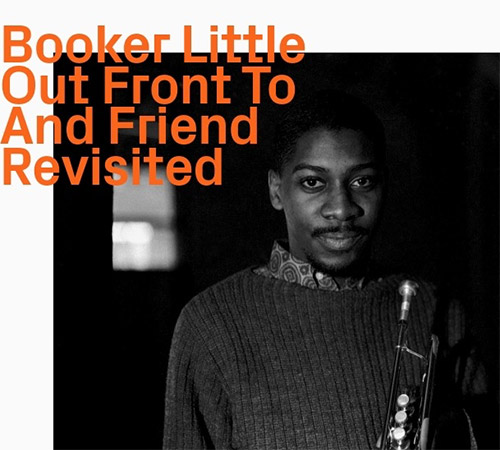
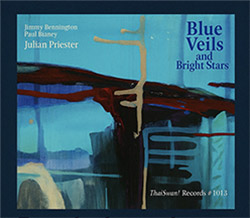



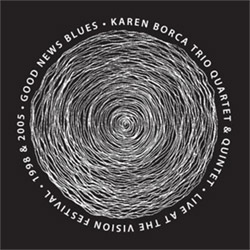
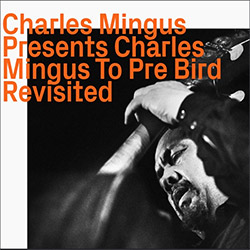
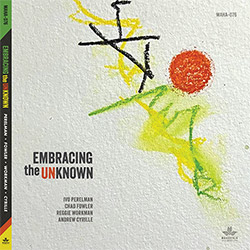





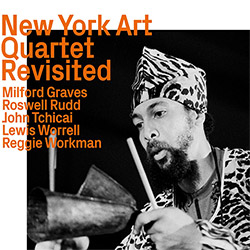
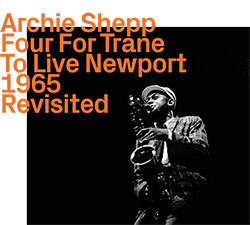
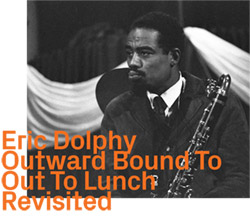



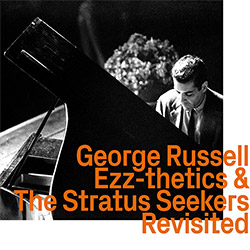
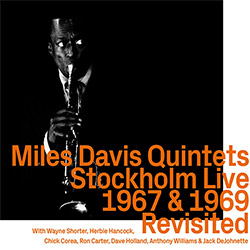

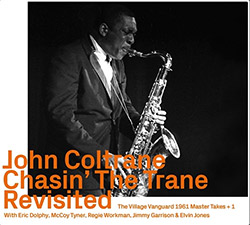

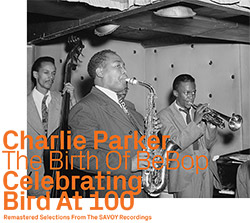

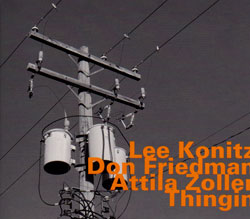










![Deupree, Jerome / Sylvie Courvoisier / Lester St. Louis / Joe Morris: Canyon [2 CDs]](https://www.teuthida.com/productImages/misc4/36404.jpg)


![Eternities: Rides Again [CASSETTE]](https://www.teuthida.com/productImages/misc4/36247.jpg)

![Lopez, Francisco: Untitled (2021-2022) [2 CDs]](https://www.teuthida.com/productImages/misc4/36438.jpg)




![Eventless Plot | Haarvol: The Subliminal Paths [CASSETTE + DOWNLOAD]](https://www.teuthida.com/productImages/misc4/36232.jpg)












![Eventless Plot | Francesco Covarino: Methexis [CASSETTE + DOWNLOAD]](https://www.teuthida.com/productImages/misc4/36231.jpg)



![Das B (Mazen Kerbaj / Mike Majkowski / Magda Mayas / Tony Buck): Love [VINYL]](https://www.teuthida.com/productImages/misc4/36329.jpg)


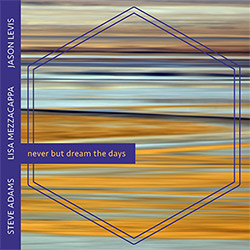
![Hemphill Stringtet, The: Plays the Music of Julius Hemphill [VINYL]](https://www.teuthida.com/productImages/misc4/36409.jpg)

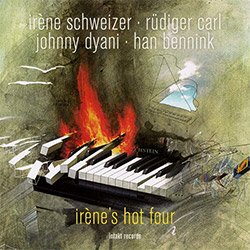

![Halvorson, Mary Septet: Illusionary Sea [2 LPS]](https://www.teuthida.com/productImages/misc4/17952.jpg)

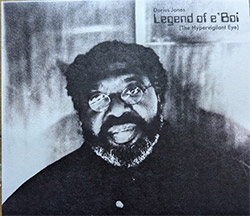




![Money : Money 2 [2 CDs]](https://www.teuthida.com/productImages/misc4/35894.jpg)




![Klinga, Erik: Elusive Shimmer [VINYL]](https://www.teuthida.com/productImages/misc4/36258.jpg)
![CHANGES TO blind (Phil Zampino): Volume 9 - I Wave on a Fine Vile Mist [CD + DOWNLOAD]](https://www.teuthida.com/productImages/misc4/36061.jpg)

![Wallmart / Rubbish: Asset Protection [split CD]](https://www.teuthida.com/productImages/misc4/35900.jpg)


![+Dog+: The Family Music Book Vol. 5 [2 CDs]](https://www.teuthida.com/productImages/misc4/35897.jpg)
![Kuvveti, Deli : Kuslar Soyledi [CASSETTE w/ DOWNLOAD]](https://www.teuthida.com/productImages/misc4/36107.jpg)

![Nakayama, Tetsuya: Edo Wan [CASSETTE w/ DOWNLOAD]](https://www.teuthida.com/productImages/misc4/36105.jpg)
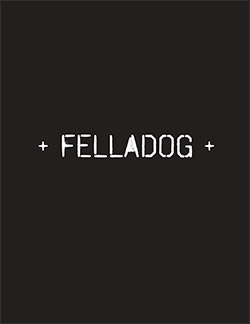
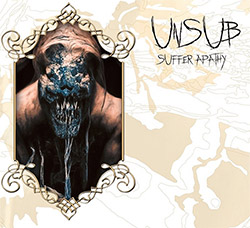


![Yiyuan, Liang / Li Daiguo: Sonic Talismans [VINYL]](https://www.teuthida.com/productImages/misc4/35957.jpg)
![Brown, Dan / Dan Reynolds: Live At The Grange Hall [unauthorized][CASSETTE]](https://www.teuthida.com/productImages/misc4/36245.jpg)








![Palestine, Charlemagne / Seppe Gebruers: Beyondddddd The Notessssss [VINYL]](https://www.teuthida.com/productImages/misc4/36206.jpg)
![Palestine, Charlemagne / Seppe Gebruers: Beyondddddd The Notessssss [NEON GREEN VINYL]](https://www.teuthida.com/productImages/misc4/36207.jpg)

![Laubrock, Ingrid: Purposing The Air [2 CDs]](https://www.teuthida.com/productImages/misc4/35639.jpg)

![Yoko, Ono / The Great Learning Orchestra: Selected Recordings From Grapefruit [2 CDs]](https://www.teuthida.com/productImages/misc4/35841.jpg)









![Zorn, John / JACK Quartet: The Complete String Quartets [2 CDs]](https://www.teuthida.com/productImages/misc4/35609.jpg)

![Lonsdale, Eden: Dawnings [2 CDs]](https://www.teuthida.com/productImages/misc4/35480.jpg)



![Sorry For Laughing (G. Whitlow / M. Bates / Dave-Id / E. Ka-Spel): Rain Flowers [2 CDS]](https://www.teuthida.com/productImages/misc4/35985.jpg)

![Rolando, Tommaso / Andy Moor : Biscotti [CASSETTE w/ DOWNLOADS]](https://www.teuthida.com/productImages/misc4/36106.jpg)


![Electric Bird Noise / Derek Roddy: 8-10-22 [CD EP]](https://www.teuthida.com/productImages/misc4/35970.jpg)








![Elephant9 : Mythical River [VINYL]](https://www.teuthida.com/productImages/misc4/34624.jpg)



![Elephant9 with Terje Rypdal: Catching Fire [VINYL 2 LPs]](https://www.teuthida.com/productImages/misc4/35355.jpg)
![Deerlady (Obomsawin, Mali / Magdalena Abrego): Greatest Hits [VINYL]](https://www.teuthida.com/productImages/misc4/34876.jpg)







![Surplus 1980: Illusion of Consistency [CD]](https://www.teuthida.com/productImages/misc4/35069.jpg)
![Staiano, Moe: Away Towards the Light [VINYL + DOWNLOAD]](https://www.teuthida.com/productImages/misc4/35037.jpg)
![Coley, Byron: Dating Tips for Touring Bands [VINYL]](https://www.teuthida.com/productImages/misc4/17906.jpg)

![Lost Kisses: My Life is Sad & Funny [DVD]](https://www.teuthida.com/productImages/misc4/lostKissesDVD.jpg)